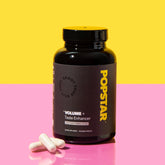“Baby Batter” is an informal term sometimes used to describe semen—an integral and complex component of male reproductive health. Though the nickname may sound whimsical, this fluid fulfills an essential role in carrying and delivering sperm, which are pivotal to the conception process. Beyond reproduction, its characteristics can offer insights into overall men’s health, as factors such as lifestyle, diet, and hormonal balance can influence the quantity and quality of this ejaculatory fluid. In this article, we’ll explore the nitty-gritty of baby batter, from its composition and production to its functionality and significance in men’s well-being. Additionally, we’ll address common myths, frequently asked questions, and tips for maintaining optimal reproductive health.
Table of Contents
- What is Baby Batter?
- How Does Baby Batter Function in Reproduction?
- What is Baby Batter Made Of?
- How is Baby Batter Produced?
- Why is Baby Batter Important for Men’s Health?
- What Factors Affect the Quality of Baby Batter?
- Frequently Asked Questions About Baby Batter
- Conclusion
- References
What is Baby Batter?
Baby batter is a colloquial phrase referring to semen, the thick, milky fluid released during ejaculation. Though many might view it as nothing more than a substance tied to sexual activity, there is a great deal of biology—and even some evolutionary nuances—behind how it’s formed and why it is vital to reproduction. Comprised of sperm cells mixed with seminal fluid, baby batter plays a pivotal role in fertilizing an egg. Additionally, analyzing its properties can yield clues to men’s general urogenital health. From sperm motility (the ability of sperm cells to move) to the presence of beneficial or harmful substances, baby batter speaks volumes about the well-being of the male reproductive system.
This fluid is produced primarily in the testes (where sperm is generated) and the accessory sex glands, including the seminal vesicles and the prostate gland. Hormonal regulation, particularly testosterone, orchestrates the continuous creation of sperm and the composition of this fluid. Because of these complexities, any significant change in hormone levels, lifestyle habits, or underlying medical conditions can cause noticeable differences in baby batter characteristics, such as volume, color, and odor.
How Does Baby Batter Function in Reproduction?
The overarching function of baby batter in reproduction is straightforward: deliver sperm to the female reproductive tract. However, this process is more intricate than simply “carrying sperm.” Key substances in semen work to neutralize the acidic environment of the vaginal canal, creating a friendlier environment for sperm to survive and ultimately fertilize an egg.
Within baby batter, there are enzymes that help sperm remain mobile. These enzymes facilitate the journey once sperm exit the male urethra. The fluid also contains sugar-like compounds such as fructose, acting as an energy source for sperm once they leave the body. Additionally, certain proteins help protect sperm from oxidative stress, thus preserving their genetic integrity. Consequently, baby batter functions not just as a passive vehicle but as a protector, energy supplier, and facilitator of fertilization.
Another key element is the coagulation and liquefaction process. Immediately after ejaculation, semen thickens to help keep the sperm in place. This initial clot eventually reverts to a more liquefied state. This sequence ensures sperm can remain in the vaginal canal long enough to progress through the cervix, while also regaining motility to travel onward to the egg if one is present.
What is Baby Batter Made Of?
Baby batter’s composition reveals it to be a mixture of various fluids produced by the male reproductive system. Key components include:
- Sperm Cells: The centerpiece of reproduction. Sperm carry genetic material that can fertilize an egg. Sperm quantity, motility, and morphology (shape) are all indicators of fertility and overall reproductive health.
- Seminal Vesicle Fluid: The seminal vesicles produce a fluid rich in fructose that energizes sperm. This fluid also contains prostaglandins, which can aid in smooth muscle contractions within the female reproductive tract.
- Prostatic Fluid: The prostate gland secretes a thin, milky fluid containing enzymes such as prostate-specific antigen (PSA). PSA helps in liquefying the semen after it coagulates.
- Bulbourethral Gland Fluid: Also known as Cowper’s glands, these structures contribute a small volume of pre-ejaculate fluid, which serves to lubricate the urethra and help neutralize residual acidity.
- Other Elements: Minerals (like zinc), citric acid, amino acids, and hormones can be found in baby batter. Adequate zinc levels, for instance, are critical for healthy sperm function and overall fertility.
The presence and levels of these compounds can vary among individuals, influenced by age, hormone balance, diet, hydration, and even genetics. For example, men with diets low in antioxidants might exhibit higher oxidative stress levels in their semen, which can reduce sperm viability. Conversely, a diet rich in nutrients and enough hydration typically supports healthier sperm production.
How is Baby Batter Produced?
This question targets the biological process behind generating baby batter. In essence, sperm production, or spermatogenesis, occurs within the testes, specifically in the seminiferous tubules. Here, an orchestrated interplay of hormones, including luteinizing hormone (LH) and follicle-stimulating hormone (FSH), prompts the development and maturation of sperm cells.
As sperm mature, they move to the epididymis, a structure atop each testicle, where they continue developing and gaining motility. Eventually, during ejaculation, they travel through the vas deferens, mixing with fluids from the seminal vesicles and the prostate gland, culminating in semen—or baby batter—exiting through the urethra.
This entire production cycle can take approximately 64 to 72 days. Consequently, any lifestyle changes—say, improving nutrition or adjusting exercise routines—may require several weeks or months before noticeable shifts in semen quality become detectable in lab tests or at-home fertility checks. This lengthy timeline emphasizes the importance of consistency in healthy daily habits for optimal sperm health.
Why is Baby Batter Important for Men’s Health?
While it’s clear that the primary role of baby batter is in reproduction, it also has broader significance for men’s health. Several lab tests analyze semen to detect potential concerns regarding fertility, as well as underlying health issues that might manifest in the fluid’s characteristics. Issues such as reduced sperm count or poor motility could hint at hormonal imbalances, varicocele (enlarged veins in the scrotum), or even lifestyle factors like excessive alcohol use, smoking, or stress.
Tracking any marked changes in baby batter—such as shifts in color, consistency, or odor—can alert men to possible infections or more serious medical conditions. For example, an unpleasant or foul smell may suggest an infection like chlamydia or gonorrhea, both of which can affect fertility in the long run if left untreated. Additionally, issues with blood pressure or cardiovascular health can, in some cases, correlate with reduced sexual function, indirectly impacting sperm quality. Understanding these correlations underscores why baby batter is relevant not just within the realm of reproduction but as a barometer for one’s systemic well-being.
What Factors Affect the Quality of Baby Batter?
Baby batter quality hinges on a complex interplay of biological and lifestyle elements. From hormonal imbalances to dietary deficiencies, an array of factors can either reinforce or hamper sperm health. Key Influencers include:
- Hormonal Regulation: Testosterone is vital for sperm production. Conditions like hypogonadism or metabolic syndromes can throw hormone levels off balance.
- Diet: A balanced diet rich in proteins, vegetables, fruits, minerals (zinc, selenium), and antioxidants can bolster sperm vitality. Conversely, diets high in saturated fats and processed foods can contribute to decreased sperm viability.
- Lifestyle Choices: Excessive alcohol consumption, smoking, and illicit drug use can damage sperm DNA and reduce overall sperm count.
- Stress and Sleep: Chronic stress elevates cortisol levels, which reduces testosterone production. Insufficient sleep similarly impairs hormonal cycles essential for sperm generation.
- Physical Activity: Moderate exercise typically helps maintain healthy hormone levels and body weight, thereby promoting optimal sperm health. However, overtraining or certain sports that increase scrotal temperature (like prolonged cycling) can negatively impact sperm production.
- Medical and Environmental Exposures: Conditions like varicoceles, infections (STIs), and excessive exposure to toxins (pesticides, heavy metals) can reduce sperm quality.
- Age: Although men can remain fertile into older age, sperm quality tends to decline over time due to DNA fragmentation and other cellular changes.
By taking steps to address each of these areas—such as improving dietary habits, managing stress, avoiding cigarette smoke, or consulting a healthcare provider for hormonal evaluations—men can optimize their baby batter. This, in turn, can improve fertility outcomes and potentially reflect an overall healthier bodily state.
Frequently Asked Questions About Baby Batter
What Does Baby Batter Look Like Under Normal Conditions?
Under normal circumstances, baby batter ranges from whitish-gray to slightly opalescent. Minor variations in color can be caused by diet or hydration levels, but significantly unusual hues (yellowish or tinged with blood) should be evaluated by a healthcare professional. Semen typically has a viscous, gel-like consistency immediately after ejaculation, then liquefies within 20 to 30 minutes.
How Much Baby Batter Is Released on Average?
The average volume of semen per ejaculation is roughly 2 to 5 milliliters—less than a teaspoon. Volume can be influenced by hydration, sexual frequency, and the functionality of the accessory glands (prostate and seminal vesicles). Periods of high sexual activity can temporarily reduce volume, although this effect typically rebounds with adequate rest and hydration.
Can Baby Batter Smell Different Based on Diet?
Yes, dietary choices can alter the smell (and taste) of semen. Certain foods, including garlic, onions, or heavily spiced meals, may impart a more potent odor. Conversely, fruits like pineapple are often said to yield a sweeter-smelling scent. Strong or foul odors should be investigated, as they may indicate infection or underlying medical conditions.
Does Abstaining From Ejaculation Boost Sperm Count?
Short-term abstinence—somewhere between two and three days—can mildly increase sperm count. However, prolonged abstinence (a week or more) may lead to reduced motility and an accumulation of older, less functional sperm. By maintaining a moderate frequency of ejaculation, men can sustain both a good sperm count and improved motility.
Which Lifestyle Changes Improve Baby Batter Quality the Most?
Modifying dietary habits, managing stress, optimizing sleep, and avoiding tobacco and excessive alcohol consumption can all substantially benefit sperm health. Physical exercises that enhance cardiovascular fitness and maintain a healthy body mass index (BMI) are also beneficial. Additionally, wearing looser undergarments and avoiding prolonged heat exposure to the testes (such as frequent sauna use) can help maintain ideal sperm production conditions.
What Are Common Causes of Baby Batter Abnormalities?
Abnormalities can manifest as reduced volume, unusual coloration, or poor sperm motility. These issues could be caused by infections, sexually transmitted illnesses, hormonal disorders, testicular injuries, or certain medications (like anabolic steroids or chemotherapy agents). It’s crucial to seek a healthcare provider’s assessment if persistent abnormalities occur.
How Do Doctors Evaluate the Health of Baby Batter?
A semen analysis is the principal diagnostic tool. This test measures parameters like sperm count, motility, morphology, volume, and pH levels. Results can identify signs of infection or inflammation. In certain instances, advanced tests like DNA fragmentation assays or hormone panels might be recommended if an initial analysis uncovers more complex reproductive health issues.
Can Supplements Enhance Sperm Production?
Many men turn to supplements like zinc, selenium, vitamin C, vitamin E, and amino acids (like L-carnitine) to support fertility. While some research supports these nutrients in optimizing sperm health, the best approach still includes a balanced diet and healthy lifestyle. Before beginning any supplement regimen, it’s wise to consult a healthcare professional, as improper dosing may produce adverse effects.
Is Baby Batter Ever Used for Medical Purposes Outside of Reproduction?
Semen is primarily recognized in the context of fertility, but research occasionally investigates potential biomedical uses. There have been studies on seminal plasma’s role in gene transfer or its capacity to influence immune function, though these remain specialized areas of research. In mainstream practice, baby batter is not commonly used outside of reproductive settings.
Should I Be Concerned If Baby Batter Has a Slightly Different Color?
Sometimes, slight variations in color are harmless, particularly if they fade within a day or so and do not coincide with pain, fever, or other symptoms. Bright red or dark brown discolorations, however, can indicate the presence of blood (hematospermia) often caused by infections, inflammations, or minor injuries. Chronic discolorations should be brought to a doctor’s attention.
Why Is Some Baby Batter More Viscous Than Others?
The thickness of semen can be attributed to individual differences in secretions from the prostate and seminal vesicles, as well as hydration levels and general fluid intake. If semen remains exceedingly thick or doesn’t liquefy, it may hinder sperm mobility and reduce the chances of successful fertilization. In such cases, a medical evaluation is warranted.
Does Age Affect the Quality of Baby Batter?
Although men remain fertile longer than women, advanced age can diminish sperm count and increase the likelihood of genetic abnormalities in sperm DNA. Older men may find their partners take longer to conceive, and there is a slightly elevated risk of genetic disorders. Nonetheless, many men father children well into their 40s, 50s, and beyond without complications.
What Are Some Signs I Should Seek Professional Advice?
Men should consult a healthcare professional if they experience drastic changes in semen, including persistent or recurrent discoloration, strong foul odor, chronic pain during ejaculation, or significantly decreased volume. Evaluations are especially crucial for anyone attempting conception without success for six to twelve months. Early detection and intervention can resolve many potential problems before fertility is severely compromised.
Conclusion
While the term “baby batter” may elicit a smirk, its significance in fertility and men’s health is no laughing matter. From maintaining an optimal environment for sperm formation within the testes to transporting these cells during ejaculation, baby batter accomplishes a host of tasks essential to reproduction. Further, its intrinsic properties can serve as a window into broader health concerns, helping identify possible issues such as hormonal imbalances, infections, or lifestyle deficits.
By understanding the composition, function, and variability of baby batter, men can be more proactive in safeguarding their reproductive health. Simple steps like maintaining a balanced diet, exercising, moderating alcohol intake, and getting sufficient sleep all help optimize sperm production. Monitoring any deviation from normal semen characteristics can help men detect potential problems before serious complications arise. In short, paying attention to this crucial aspect of men’s physiology can positively impact not only fertility but overall health and well-being.
References
- National Library of Medicine, Spermatogenesis and Sperm Production:
https://pubmed.ncbi.nlm.nih.gov/19460992/ - World Health Organization, Laboratory Manual for the Examination and Processing of Human Semen:
https://www.who.int/reproductivehealth/publications/infertility/9789241547789/en/ - Mayo Clinic, Male Infertility Diagnosis and Management:
https://www.mayoclinic.org/diseases-conditions/male-infertility/diagnosis-treatment/drc-20374778 - Office on Women’s Health, Reproductive Health and Family Planning:
https://www.womenshealth.gov/a-z-topics/reproductive-health - Cleveland Clinic, Sperm Health and Semen Analysis:
https://my.clevelandclinic.org/health/diagnostics/17767-semen-analysis - American Urological Association, Male Reproductive Information:
https://www.auanet.org/


































